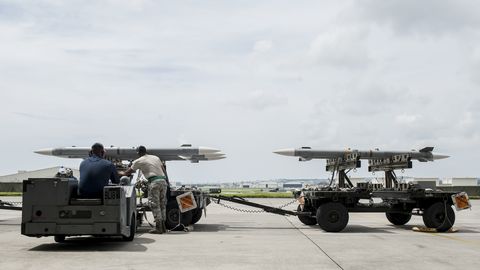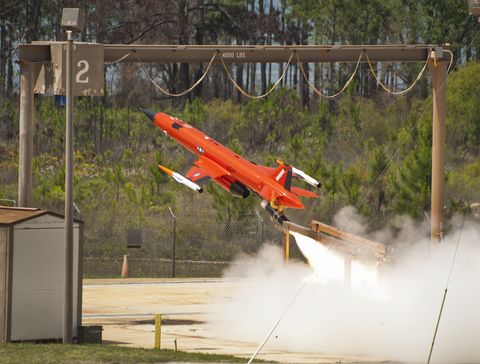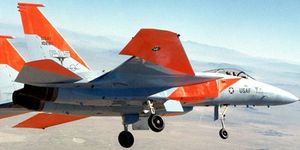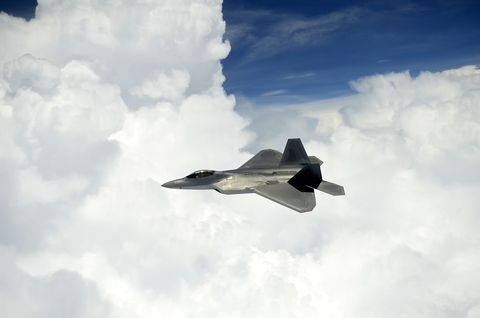F-15EX: The Strategic Blind Spot in the Air Force’s Fighter Debate
The fallout from the U.S. Air Force’s request to buy
F-15EX fighter jets to replace the aging F-15C/D Eagle has certainly been entertaining. Largely driven by lobbyist influence mixed with self-interest, a number of
lawmakers and
retired generals reflexively viewed the proposal to buy
144 F-15EXs as a threat to the 80-year
1,763 F-35A program. They predictably advocate that buying more F-35As — not F-15EXs — is the solution to replace the deteriorating F-15C/D fleet, whose shortcomings are inherent to operating a 35-year old fighter that averages 8,300 flight hours but was originally designed to fly just
4,000 hours. This camp’s message is that the F-15EX is an
outdated fighter
from the 1960s, equipped with
decades old technology, is
not survivable,
not effective, is of
little operational relevance,
does not support the National Defense Strategy, and is
more expensive than the only U.S. Air Force fighter currently in production — the F-35.
Brad Orgeron’s
recent article explored four options that would sustain the fighter air superiority fleet over the next 20 years by detailing possible procurement combinations of three aircraft —F-15C, F-15EX, and F-35A. His research provided a much-needed objective and analytical voice to a conversation that has become overwhelmingly subjective and emotional. Building on that, I hope to offer yet a different perspective, and one that he may not agree with. Spoiler: The F-15EX and F-35A are both needed, but not in the way the debate has been framed and not in a way most defense professionals have been conditioned to think. To understand this requires the conversation begin with strategy — something that many voices in the debate appear to have overlooked.
Strategic Competition in Action, or Inaction?
Since the U.S.
National Defense Strategy called for
“the reemergence of long-term strategic competition,”
strategic competition has become another well-worn buzzword referenced in speeches, statements, interviews, and congressional hearings. Despite some form of “competition” being mentioned over 60 times in the
2017 U.S. National Security Strategy and
2018 National Defense Strategy there is still
no definition within the Department of Defense to unify words, thought, and action.
That said, traditionally military leaders, strategists, and planners are culturally ingrained to think about how to win if deterrence fails, mirroring the western view of warfare in absolute terms — victory or defeat; war or peace. People with this mental framework risk misinterpreting strategic competition as an arms race to build a gold-plated fighting force that sufficiently deters an adversary and can ensure an expeditious victory if deterrence fails. But that’s not accurate.
In the 1980s, the idea of
competitive strategies became popular in corporate America and the concept of strategic competition emerged in both the
C-suite and the
E-ring. In this context, the idea is best described as a methodology to disrupt target markets in precise ways that generate deliberate competitive shifts. The goal is to dissuade competitors in certain geographic, technical, and ideological areas and push them towards ones that better align with U.S. interests over the long term. Like a business jockeying for market share, competition is perpetual and infinite, a series of ever-shifting temporary states of winning and losing — not victory or defeat.
Viewed through a military lens, strategic competition should
continually produce a range of variables that can be mixed and matched to produce exponentially more capabilities that provides a unique versatility to commanders that can be used to complicate a competitor’s situation. This should sound familiar, as it’s the marketing pitch for today’s
multi-domain operations.
The realized strategy (the end) rarely matches the intended strategy (the beginning) because a strategy can — and should — evolve over time. The
Mintzberg model acknowledges that the realized strategy is actually a combination of both
deliberate and emergent strategies. As a strategy is executed, various smaller emergent strategies are coupled and decoupled to the long-term deliberate strategy as new opportunities present themselves.
What does this have to do with the F-15EX and F-35A? The F-35A represents the deliberate part of the strategy, while the F-15EX represents the emergent part. F-35A may be the generational foundation for the Air Force’s fighter force structure strategy through the 2070s, but the way it is traditionally envisioned for use has little to do with the emerging framework of strategic competition (note China and Russia have been developing stealth-negating weapons systems for
20 years). However, coupling the F-35A with other rapidly-fielded force structure opportunities like the F-15EX enables the Air Force to engage very effectively in strategic competition. This is how it’s possible to remain committed to the F-35A while also supporting the F-15EX. In other words, this is how both sides are right.
Now, how both sides are wrong. Just because the F-15EX has the potential to engage in strategic competition doesn’t mean it’s happening. Defense officials have indicated that the rationale for buying the fighter is based on a
number-crunching cost efficiency business case, while Air Force officials have cautiously noted the F-15EX is meant to complement the F-35
across the spectrum of conflict and would serve as a
capacity and
readiness backstop for traditional F-15C/D missions. This is the predicable, boring company line. Procuring new F-15EXs, even with its impressive
12 air-to-air missile magazine, to perform traditional
forward defense forward base defense and protection of high-value airborne assets has nothing to do with strategic competition — but neither does simply buying more F-35As for this purpose.
The litmus test for strategic competition is simple: Will an adversary care about this, and if so, why? In the end, if China or Russia doesn’t care which platform Congress chooses to replace the aging F-15C/D fleet with, neither should the warfighters. It simply becomes a decision grounded in politics, emotion, and parochial interest — not strategy or national defense. It doesn’t have to be this way, though. The F-15EX — currently both maligned by backers of the F-35A and misunderstood by the Air Force officials buying it — has all the potential to be the disruptive force in strategic competition that the Air Force sorely needs, albeit in a dramatically different fashion than anyone has been discussing.
This mentality first requires that we stop thinking in terms of labels like “fighters” and “fourth generation” and instead view a platform for its attributes and potential — the F-15 is not the aircraft you think it is.
Not Your Father’s F-15
Originating as the U.S. response to the Soviet Union’s Mach 3
MiG-25 interceptor, the Mach 2.5 F-15 was built around a massive radar and sized to carry large long-range counter-air missiles. Beyond its large size (20 percent larger than the F-35), it was engineered before the advent of computers and digital fly-by-wire systems. Because of this, the F-15 has an aeronautically stable design that
current fly-by-wire fighters do not have. Most importantly, these attributes have permitted it to evolve. Today’s F-15 is not a
Nixon-era fighter anymore than the F-35 is an
early 1990s fighter.
Figure 1. Some of the dozens of configurations the F-15E has used in combat. During Operation Inherent Resolve it carried everything ranging from eight AIM-120s to seven 2,000 lb GBU-31 JDAMs. (Image: Author.)
Once lauded as a fighter with “
not a pound for air-to-ground,” the original light gray F-15C/D Eagle air superiority fighter evolved into the dual-seat dark gray multirole F-15E Strike Eagle that has been a staple of virtually every U.S. Air Force
combat operation since
1991. The F-15E serves as the basic model for the F-15I, F-15K, F-15S, F-15SA, and F-15SG export variants and is what the F-15EX improves on. The F-15E’s size and reinforced structure trade some of traditional fighters’ speed and maneuverability to gain the best range, payload, and capacity for sensors of any fighter in the U.S. inventory. Not only can it employ virtually every weapon in the U.S. and coalition inventory, it’s also comically versatile in terms of the combinations of configurations that can be flown. The same attributes also make the F-15 the workhorse for testing and fielding of new weapons, sensors, and
emerging capabilities that eventually make it onto other fighters like the F-22 and F-35.
Figure 2. One side of Boeing’s F-15E testbed showcasing its expanded wing station with an AGM-88 High Speed Radiation Missile, Taurus KEPD 350 cruise missile, three GBU-54 Laser JDAMs, eight Small Diameter Bombs — along with a 2,000 lb. GBU-31 JDAM on centerline and conformal fuel tanks. (Image: Boeing/Military Tech via Youtube.)
The modern F-15E shows how neatly compartmentalizing fighters into “generations” can be misleading and subconsciously shape our perceptions. Consider the fifth-generation F-35’s much-lauded
sensor fusion. This is enabled by computing power, software, sensors, and algorithms; all items with high potential to scale to other platforms — and they have. Despite the hype, the reality is that almost all current fighters have had some form of sensor fusion for the
better part of a decade. In fact, the newest, largest, and
most capable radar and the
highest computing power on a U.S. aircraft aren’t on a fifth-generation fighter — they’re on the F-15E.
In the time I’ve flown the F-15E I’ve seen it progress through seven major operational software updates (called suites) and various
hardware upgrades, each more integrated and potent than the last. When the
next software upgrade arrives it will have even
more sensors and hardware. In fact, the only limitation keeping it from achieving sensor fusion on par with the F-35 is its cockpit displays. As an example of how sequestration and funding instability drive incoherent budget choices, nearly $12 billion in aforementioned F-15E sensor upgrades are still stubbornly pushed through 1980s displays that use cathode-ray tubes to produce
low-quality analog video that
aren’t even all color, let alone digital, touchscreen, or high-resolution. The impressive F-35 cockpit has all of this, and that makes all the difference. The F-15EX
enhanced cockpit displays mirror the newest displays coming to both
F/A-18 Block III and
F-35 Block 4, mostly because they are all made by the
same company.
Figure 3. F-15 cockpit over time. Cockpit displays are the limiting factor in achieving full sensor fusion. (Image: Boeing/Author/U.S. Air Force.)
The F-15 shows how targeted hardware and software investments unlock capabilities that blur the lines between generations of fighters. Capabilities alone do not comprise a strategy, though. It’s all about how those capabilities are applied.
Adaption, Not Innovation
At this point, the F-15EX naysayers often contend that even the most advanced fourth-generation fighters won’t be able to operate in future contested environments, that they are “
incapable of participating against peer threats” — some have even gone as far as calling the idea of buying the F-15EX
a moral issue. A
think tank analysis best summarizes this camp’s flawed logic: “It is hard to imagine any high-end scenario where [these] fighters will be able to operate.”
Recall that strategic competition is largely about generating disruption. Broadly speaking, disruption typically happens in two ways. At one end is innovation, which military leadership has been
endlessly calling for. This is reflected in the
surge of
research and development funding to explore promising new technology that takes many years to mature and manifest (if ever). At the other end is adaption, where users of equipment find new ways to use combinations of what is available. Where the former is slow, bureaucratic, and well-funded, the latter is exactly the opposite.
Adaption, not innovation, is the compelling variable in rapidly linking emergent strategies with deliberate strategies in strategic competition. Operators live in a world where the hope of innovation is not an option — we go to war with what we have. We adapt by embracing industriousness, ingenuity, and creativity to generate advantages on the battlefield and in the sky — we call this
being tactical. Applying this mentality strategically would get the Air Force off the beaten path to find more rapid and disruptive ways to economically compete. Stop thinking about the F-15EX as a fighter and start viewing it as an adaptable platform.
Figure 4. On Sept. 13, 1985 an F-15A launched an ASM-135 anti-satellite missile from a 65-degree climb at 38,100 feet. Traveling at 11,000 mph, the missile intercepted a 17,000 mph orbiting satellite 345 miles above Earth. (Image: U.S. Air Force.)
Though the F-15 airframe was designed to be solely an air superiority fighter, it has been used to
shoot down satellites, fly to
100,000 feet, manually pilot
rocket-powered precision bombs onto targets before GPS, employ
stealth cruise missiles, shoot
over-the-horizon anti-ship missiles, simultaneously employ multiple
5,000 lb. bunker busters, and fly 800 miles per hour just 100 feet above the ground, at night, in the weather — on autopilot. It’s even been turned into a
thrust vectoring Mach 2
NASA flight test vehicle capable of taking off at just 42 mph and landing on
less than 1,700 feet of runway. None of these uses were a product of the F-15’s original capabilities. Rather, they came from adaption, which was in turn built off knowledge gained from hundreds of thousands of flight hours and decades of flight science research with a platform with enabling attributes.
Figure 5. F-15 Fuel and Sensor Tactical (FAST) Pack usage concepts from the late 1970s provide a reminder of creativity possibilities. The weapons prototype FAST Pack evolved to become the Conformal Fuel Tanks used today. (Image: Public Domain.)
Earlier this year, Air Force officials caught the attention of defense media when they mentioned that the F-15EX could potentially be used as a
hypersonics launch platform. Fighter-launched hypersonic weapons are an interesting example of creating a new disruptive effect via adaption. Similarly, the defense world took notice when Russia announced that MiG-31 fighters had already launched
a dozen hypersonic weapons in testing. Using F-15s to launch hypersonic weapons is not hard, mostly because it’s not new. In 2002 DARPA’s
HyFly program sought to launch a
400-mile Mach 6 hypersonic from an F-15E, and in 2007 NASA used an F-15B as a
Mach 5 hypersonic research test bed. To compete in this realm, the Air Force should publicly declare ambitious tests on compressed timelines to not only launch one of the emerging hypersonic weapons from an F-15, but also produce a timeline for full fleet integration.
Figure 6. Top: An F-15E takes off with DARPA’s Mach 6 HyFly prototype, circa 2005. Ultimately, scramjet issues prevented it from getting past Mach 3 (Image: LX3 Corp.). Bottom: NASA F-15B outfitted with a modified AIM-54 during the Mach 5 Phoenix Missile Hypersonic Testbed program, circa 2007 (Image: NASA).
Another ingenious example of adaption comes from the Israeli Air Force, which has used the F-15 to launch medium-range air-launched ballistic missiles as test targets for over a decade. The largest is the
Silver Sparrow, a 27-foot long, 6,900 lb. missile that has an apogee 90 miles high (for perspective, space starts at
62 miles). Though it’s already proven on the F-15, there is nothing remotely comparable in the U.S. inventory today. The closest attempt was the nuclear-tipped
GAM-87 Skybolt, which was cancelled in the 1960s. Incorporated in a package alongside current stand-off capabilities, fighters equipped with air-launched ballistic missiles could introduce a wildly disruptive and asymmetric problem for Chinese and Russian air defenses.
Figure 7. An Israeli F-15D with a mid-sized Blue Sparrow air-launched medium range ballistic missile target used to test Arrow missile defense system. (Image: Rafael.)
The Pacific offers numerous maritime opportunities for adaption. While some F-15 variants already perform anti-ship warfare with
stand-off data-link weapons, fighters haven’t performed
torpedo bombing since World War II. Given the
proliferation of naval threats, F-15EXs equipped with
winged aerial torpedoes could dynamically target submarines in contested airspace where the only air-launched torpedo platform — the
Navy P-8 Poseidon — can’t operate. Similarly, F-15EXs could be outfitted with
precision-guided winged naval mines to perform
aerial mining in areas deemed too risky for the defenseless B-52. This is competing via adaption.
Opening the aperture of imagination even further, the F-15EX could be used to launch
flying missile rails that can “mine airspace” to autonomously maintain pockets of air superiority to enable other missions — like Tony Stark’s
Iron Legion freeing the Avengers to tackle other priorities. Or perhaps it could be used for
delivering long endurance cluster drones or
employing swarms-on-demand to provide much-needed range, reach, and loiter that promising new
tactical air control concepts lack. Maybe it’s
deploying and controlling unmanned teammates via the missionized rear cockpit, or being an
air-launched decoy/jammer truck, or delivering
stand-off non-kinetic weapons, or being a mothership for attributable
penetrating electric attack platforms, or being an agile foundation for
launch-on-demand satellite constellations that are responsive and unpredictable. Now imagine all of these concepts not launched from a vulnerable base or a runway — but
from a highway, enabled by the budding
combat support wing initiative. This is what strategic competition looks like.
Figure 8. An F-15SA during flight test configured with 12 CBU-105 cluster bombs, eight AIM-120 missiles, terrain following radar, forward-looking infrared, and targeting pods, conformal fuel tanks, and external tanks totaling 30,000 lb. of fuel. Inset, disposable 10-hour loiter Remedy drone that fits inside repurposed cluster bomb canisters. (Image: Northrop Grumman.)
Finally, for perspective on adaption, look at the venerable B-52 Stratofortress. When it entered service in
1952, no one could have imagined a bomber would be used to
shoot nuclear cruise missiles, deliver
stand-off precision-guided naval mines,
put satellites into orbit, launch a
Mach 9 hypersonic vehicle, or serve as a
flight test bed for NASA. Thanks to its sheer mass and rugged design, it can accommodate the size, weight, and power considerations of emerging technology and will remain relevant for
100 years of operations — stealth not required. If you think this sounds a lot like F-15EX, you’re right.
These ideas provide a glimpse of new ways to embrace adaption to deliver effects that enable — rather than inhibit — other platforms, all while subscribing to the warfighting principles of mass, maneuver, economy of force, security, and simplicity. Updating a common phrase that originated from an
airpower zealot a century ago: Flexibility, agility, and versatility are the key to airpower.
Option 5
So where does that leave the aging F-15C/D fleet, the reason this is even a conversation? The aforementioned
War on the Rocks article articulated
four options and concludes that an optimal solution likely includes a mix of F-15EX and F-35A to replace the F-15C. However, viewing the problem through a different lens, I offer a fifth option for consideration. To reap a strategic return on investment, the best and most disruptive option is to replace the F-15C with a combination of repurposed F-15Es, upgraded F-16s, F-35As, and a homeland defense fighter derivative of the T-X platform — while simultaneously putting the F-15EX where it can better support the
National Defense Strategy.
First, the Air Force should accelerate the next-generation trainer jet development to spin off a
low-cost homeland defense fighter derivative and prioritize conversion to select F-15C/D Air National Guard units that primarily exist to protect the homeland. Concurrently, procure F-15EX
as fast as possible for a two-move shuffle. As F-15EXs roll off the production line, send them to current F-15E units to leverage the multi-role two-crew manpower construct already in place. This capitalizes on the capabilities of the multi-role two-seat F-15EX and permits acceleration of concepts that contribute to the
National Defense Strategy. As new F-15EXs arrive, current healthy F-15Es would be sent to replace the oldest F-15Cs. Stripped of features unnecessary for a pure air-to-air role, F-15Es would be a marked improvement over current F-15Cs. They would get a modern communication and navigation suite, an updated cockpit, better sensor integration, integrated Sniper pod, optional conformal fuel tanks, and a fully funded
Eagle Passive Active Warning Survivability System that the current F-15C fleet lacks.
Figure 9. Boeing F-15E outfitted with AMBER rack prototypes on lower weapon stations. With no other changes, this rack would expand current F-15E missile capacity from eight to 14 AIM-120s. Because it connects via standard bomb attachment lugs, the rack should also easily fit the F-35A inboard wing stations to double its missile capacity for non-stealth air defense missions. (Image: U.S. Air Force.)
The estimated
$3.4 billion saved by not funding this electronic warfare system in retiring F-15Cs could be put towards rapidly procuring the Advanced Missile and Bomb Ejection Rack (AMBER) rack system for air-to-air F-15Es and upgraded front cockpit displays. With no other changes, the AMBER rack would increase missile capacity to 14 missiles (see Figure 9). As not all counter-air missions require stealth, the AMBER rack also provides a valuable tool to increase the air-to-air magazine for F-35As that would replace another portion of the F-15C/D fleet. Finally, as F-35A production continues to replace F-16s as planned, a portion of these F-16s should be outfitted with AMBER racks and shifted to replace a final segment of F-15Cs. This move aligns with current Air National Guard efforts, as the Air Force is already upgrading a portion of its F-16 fleet with
advanced radars to fill
critical homeland defense shortfalls.
As a final nod to disruption, adaption, and strategic competition, the Air Force should seek alternatives that contribute to gaining and maintaining pockets of air superiority that
do not involve fighter aircraft and that can be showcased to the competition — the much lauded multi-domain approach.
Looking Forward
Regardless of how the Pentagon arrived at this juncture, there is an important choice ahead. While Congress appears to be at least somewhat
supportive of
F-15EX procurement, the global environment demands we think in a new way. The F-15EX has all the potential to be the disruptive force in strategic competition that the Air Force sorely needs, albeit in a dramatically different fashion than anyone has been discussing.
The urgency in war is often lost during times of peace. In a world of long-term, ever-shifting competition with our adversaries watching, are they likely to take notice if we pursue more of the same following the same predicable routine? Or will something genuinely disruptive — a novel, adaptive re-envisioning of an important platform’s capabilities — give them pause?
Mike Benitez is a U.S. Air Force Weapons Systems Officer with 2,000+ hours in the F-15E Strike Eagle, a U.S. Air Force Weapons School graduate, former DARPA fellow, former Defense Legislative Fellow, and a Contributing Editor at War on the Rocks
. The views expressed are those of the author and do not reflect the official policy or position of the Department of Defense or the Department of the Air Force.
 COMMENTARY BY
COMMENTARY BY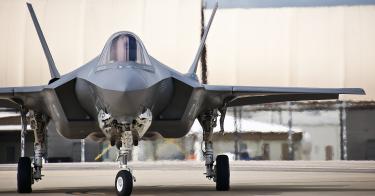 An F-35A Lightning II pilot turns his aircraft along the yellow taxi line on the 33rd Fighter Wing flightline at Eglin Air Force Base, FL on September 26, 2014. U.S. Air Force photo by Samuel King Jr.Key Takeaways
An F-35A Lightning II pilot turns his aircraft along the yellow taxi line on the 33rd Fighter Wing flightline at Eglin Air Force Base, FL on September 26, 2014. U.S. Air Force photo by Samuel King Jr.Key Takeaways


















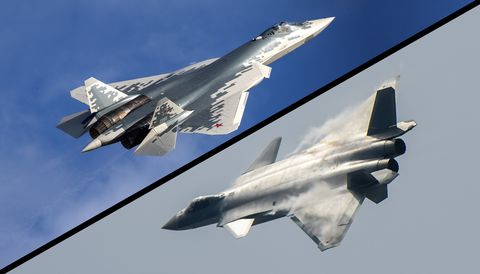
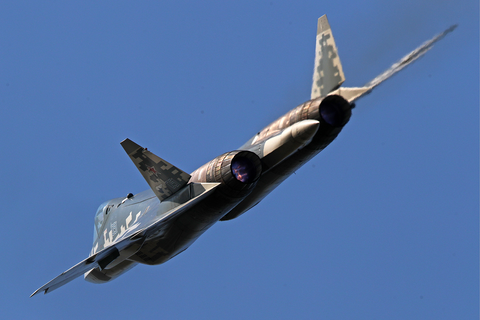
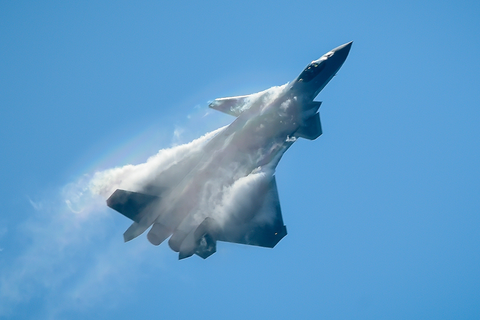
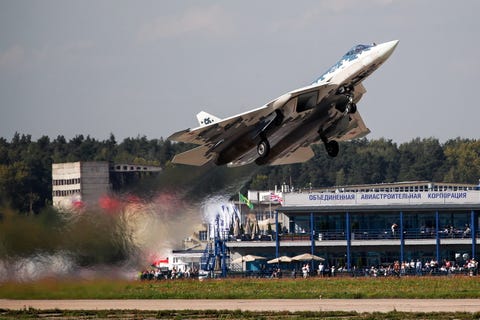
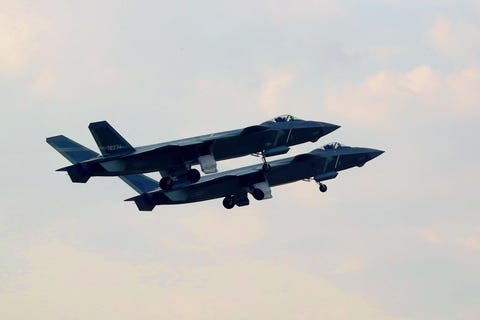
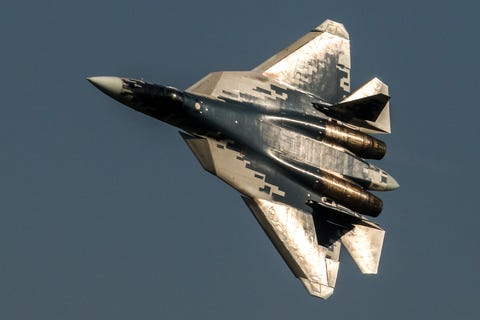
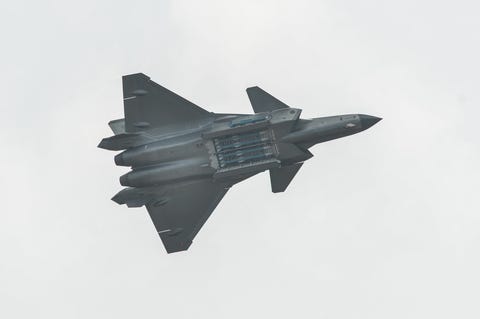
/cloudfront-us-east-1.images.arcpublishing.com/mco/52KOGNOL2ZBCFNFZVB5IRULX2E.jpg)
